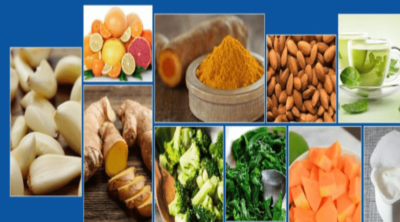
This NutriNeat article presents nutrition data of the Pangasius fish, a mild-flavored, farm-raised fish, that is mostly produced and exported by South Asian countries. Here’s how it can be a healthy addition to your diet…
Did You Know?
According to the Oregon State University, Americans eat twice as much cheese and an almost equal amount of apples, watermelon, and turkey as they do fish and shellfish annually.
Pangasius is a mild-flavored, white-fleshed, firm-textured fish, that is quite popular in Southeast Asia. It is usually served with scallions and a spicy lemon sauce. It is a farm-raised fish, mostly produced by countries like Vietnam and Thailand. Striped Pangasius, the scale-less freshwater fish are primarily produced in the Mekong Basin of southern Vietnam. The fish can be medium-large or very large. They are stout and heavy. Various freshwater species belonging to the Pangasius family are exported by Vietnam, Cambodia, and other countries. These species are known by various names, like tra, basa fish, catfish, Asian catfish, channel catfish, swai, sutchi, striped pangasius, and pangasius.
There are 21 recognized species in the genus Pangasius. As different species are known by similar names, and as similar species are produced by different nations, buyers find it difficult to identify the product and compare the prices. The U.S. Food and Drug Administration has approved specific market names for some catfish species that are imported from different parts of the world.
Differences Explained
| Market Name | Scientific Name |
| Catfish or Channel Catfish | Ictalurus punctatus, produced in the U.S. and China. |
| Swai, Tra, Sutchi, Striped Pangasius, or Pangasius | Pangasius hypophthalmus, produced in Vietnam, China, and other South Asian countries. |
| Basa or Pangasius | Pangasius bocourti, produced in Vietnam, China, and other South Asian countries. |
Nutritional Information
According to the seafood health facts published by Oregon State University, Cornell University, and a number of other universities, here is what raw Pangasius offers:
| Serving Size: 4 oz. (113 g) | |
| Protein | 17 g |
| Calories | 110 kcal |
| Calories from fat | 35 kcal |
| Total fat | 4 g |
| Saturated fat | 1 g |
| Trans fat | 0 g |
| Cholesterol | 40 mg |
| Sodium | 150 mg |
| Carbohydrates | 0 g |
| Dietary fiber | 0 g |
| Sugars | 0 g |
Pangasius fish nutrition facts may vary according to the size and weight of the fillet, the feed used in aquaculture procedures, ingredients added during cooking, and method of preparation. The fish is high in protein, and low in fat and sodium. It offers various vitamins and minerals; for example, thiamin, vitamin B12, vitamin D, potassium, iron, phosphorus, and selenium. It is a very good source of protein. Calories in Pangasius fillet can keep you satiated if you consume it as an afternoon or evening snack. But as it contains cholesterol, you should not over-consume it. Frying it may destroy some of the nutrients present. Baked fish is a better option. The omega-3 fatty acids obtained can help reduce the risk of heart diseases.
Basa is the most preferred variety, as it has a mild-sweet flavor. It is whiter and softer than Swai or Tra. Basa fillets are thicker than those of other varieties. Swai or Tra have a relatively more coarse texture. That is why, Basa is a higher-priced fish than Swai.
Is it Safe to Eat?
The National Fisheries Institute publishes the ‘Top Ten’ list of the most consumed seafood in the United States. In 2011, Pangasius had acquired sixth position in this list. But after that, it was seen that sales declined significantly. The same happened in European countries too. The reason behind this is perhaps the adverse publicity made by the World Wildlife Fund (WWF) that still surrounds this fish. WWF included Pangasius in its red list of species to avoid. Moreover, it also announced in a television program that the methods of farming and processing of Pangasius are disgraceful, and so the fish can be harmful for human health. But no one has yet received reports of any kind of disorder or ill health after eating this fish. Producers have denied the said allegations.
Responding to the adverse publicity, producers, the Vietnam Association of Seafood Exporters and Producers (VASEP), and governments have imposed additional food safety controls and certain product monitoring procedures. In Vietnam, producers follow modern aquaculture techniques, and along with the government, they check the quality of water that is used for growing the fish, several times a year. They claim that their products are hormone-free, antibiotics-free, and they use only safe, tested, and approved feeds.
The ever-increasing demand for seafood has resulted in more aquaculture production, and it seems that Pangasius would again occupy its position in the ‘top ten’ list of most consumed seafood.

